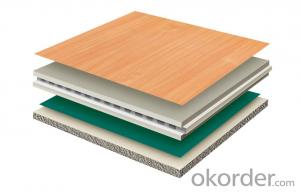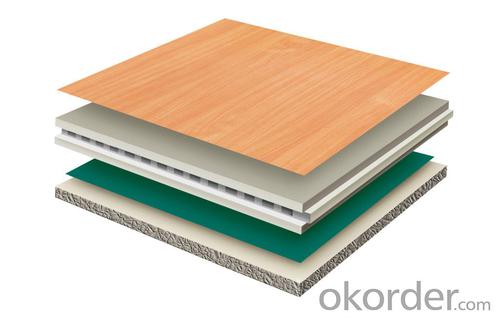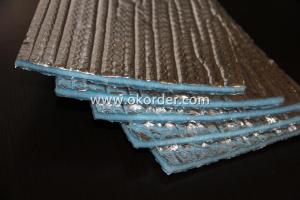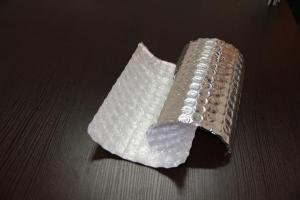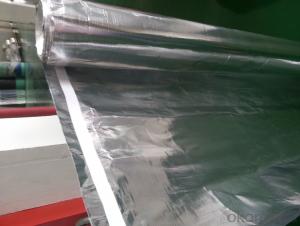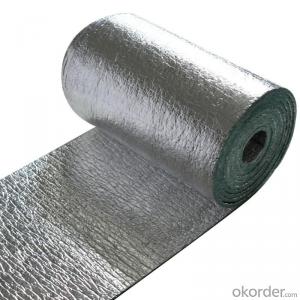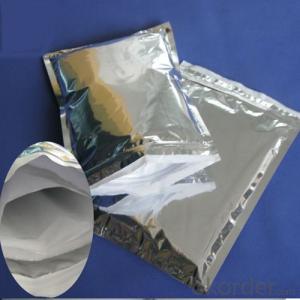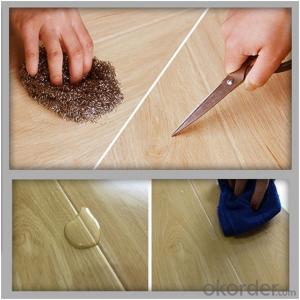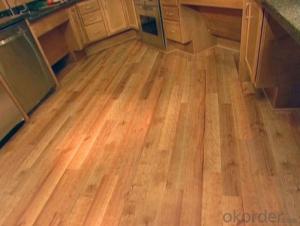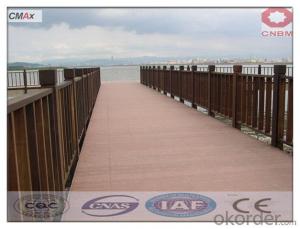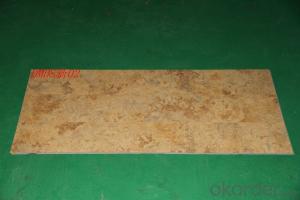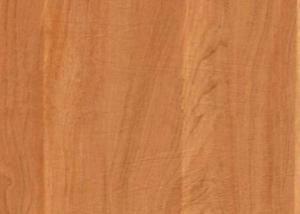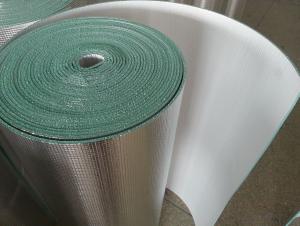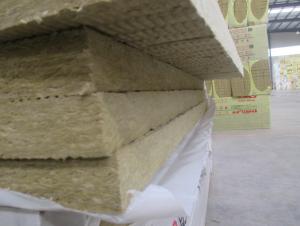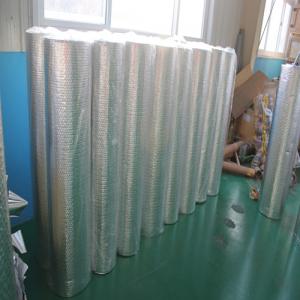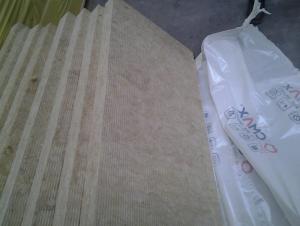Eco-Friendly PVC Wood Composite Flooring with Roofing Insulation Disc
- Loading Port:
- Shanghai
- Payment Terms:
- TT or LC
- Min Order Qty:
- 3000 g/m²
- Supply Capability:
- 50000 g/m²/month
OKorder Service Pledge
OKorder Financial Service
You Might Also Like
ENVIROMENTAL-FRIENDLY PVC WOOD COMPOSITE FLOORING
Quick Information
1.Material: Wood and PVC composite
2. Enviromentally -freindly
3.formaldehyde-free
Specifications
Surface treatment: HPL( High Pressure Laminate)
1) Material: wood, PVC
2) Waterproof, can be used interior
3) Environmentally-friendly, formaldehyde-free
4) Durable decorative film from Germany
Packing:
10 - 12pcs/ctn
Carton dimensions: 12 x 125 x 800mm/1,200mm
Description
(1)Thicknesss:5mm+2mm./ 6mm+2mm
(2)Thickness of wear layer: 0.2mm,0.3mm
(3)Dimensions:7mm/8mm x 140mm x 900mm
(4)Material:pvc resin ,wood
(5)Special Features:Anti-chemical,Sound absorbing,waterproof,fire resistance,
anti-aging,stain resistance
(6)Esay to install,clean and maintain.
(7)Environmental friendly
Packaging & Delivery
Packaging Details:
Delivery Detail:
Carton Packages |
14 working days for 20GP |
Picture
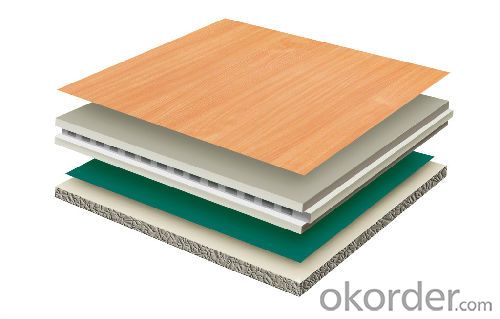

- Q: Should a two story home have insulation under the roof in the big closets ?
- yea. it might cost you some to put it in but it will save you a lot in the future with heating and air conditioning bills
- Q: the roof of my mouth hurts bad.i worked all day with sawdust and insulation yesterday.is this the problem.?
- it is what might have irritated your mouth. use a mask in the future. for now, increase your fluid intake and try Benedryl for a few days.
- Q: How much insulation is required in a house roof in new York ?
- The US Dept of Energy provides online calculators to answer your question based on your zip code.
- Q: I am really confused about this science stuff! Sustainability is terrible xP
- All versions of insulation are largely air that is kept from moving - air is a good insulator if convection - movement of heated or cooled air due to changes of density - is prevented. This assumes that a vapor barrier and caulking prevent actual air movement through the wall when a wind is blowing. Some insulators are also poor conductors of heat so the connection between inside and outside that might occur is broken. As it happens, glass used in fiberglass and minerals used in rock wool are actually pretty good conductors of heat in solid form but as fine particles and flakes they don't conduct well from one strand/piece to the next.
- Q: what effect does changing the pitch of a roof have on the insulation properties and durability of a roof?
- The pitch of a roof has zero effect on the r-rating of insulation. Proper ventilation of the attic space, whether steep or low pitched, simply provides the optimum environment for the r-factor of the insulation to do its job more efficiently. Any attic, regardless of pitch, if it is not properly ventilated, would stress the effectiveness of any insulation product unnecessarily. The durability of the roof is not adversely affected either.
- Q: Does snow on the roof help or hurt my heating bill?
- I mostly shows that your home is well insulated and not loosing heat through the ceiling to melt it. Think of an Igloo made of packed snow. It can be kept at a temperature just below freezing so that it will not melt and still keep those inside from the 30-60 below outside.
- Q: Hi, my building is hot in temperature in summers, so I am finding ways to tackle the problem by placing some heat insulating materials against the sunlight on the roof of my building. I have found several possible solutions, but none of them close to perfect. 1. grass layer: hard to maintain2. heat-insulating brick: might be too heavy to carry them to the roof3. heat-insulating coating: would it be damaged if we step on them? Are there things like heat-insulating carpets that would be convenient to instal?
- Closed cell spray foam applied to the inside of your roof sheathing will work just fine. It needs to be installed by a specialty contractor. Good Luck
- Q: weather stripping/ foam strip?
- I'm assuming your talking about a ridge cap normally you would seal it in with tar or polyurethane caulk and put your shingles over it
- Q: This is blocking airflow and I'm having it removed after I bought the house. There is already insulation on the attic 'floor'. This is double insulated and is not correct. Why would anyone do this?
- No building codes back then, and maybe he was thinking about putting an extra room up there then you would have to insulate the rafters also
- Q: Can you put fiberglass insulation on the under side of roof tiles in the loft in the house?
- Not between tiles and roof sheathing, but YES on the inside of the sheathing, between the rafters. However, the recommended location is between the rafters on the FLOOR of the loft, unless you plan on using the loft as a living space.
Send your message to us
Eco-Friendly PVC Wood Composite Flooring with Roofing Insulation Disc
- Loading Port:
- Shanghai
- Payment Terms:
- TT or LC
- Min Order Qty:
- 3000 g/m²
- Supply Capability:
- 50000 g/m²/month
OKorder Service Pledge
OKorder Financial Service
Similar products
Hot products
Hot Searches
Related keywords
